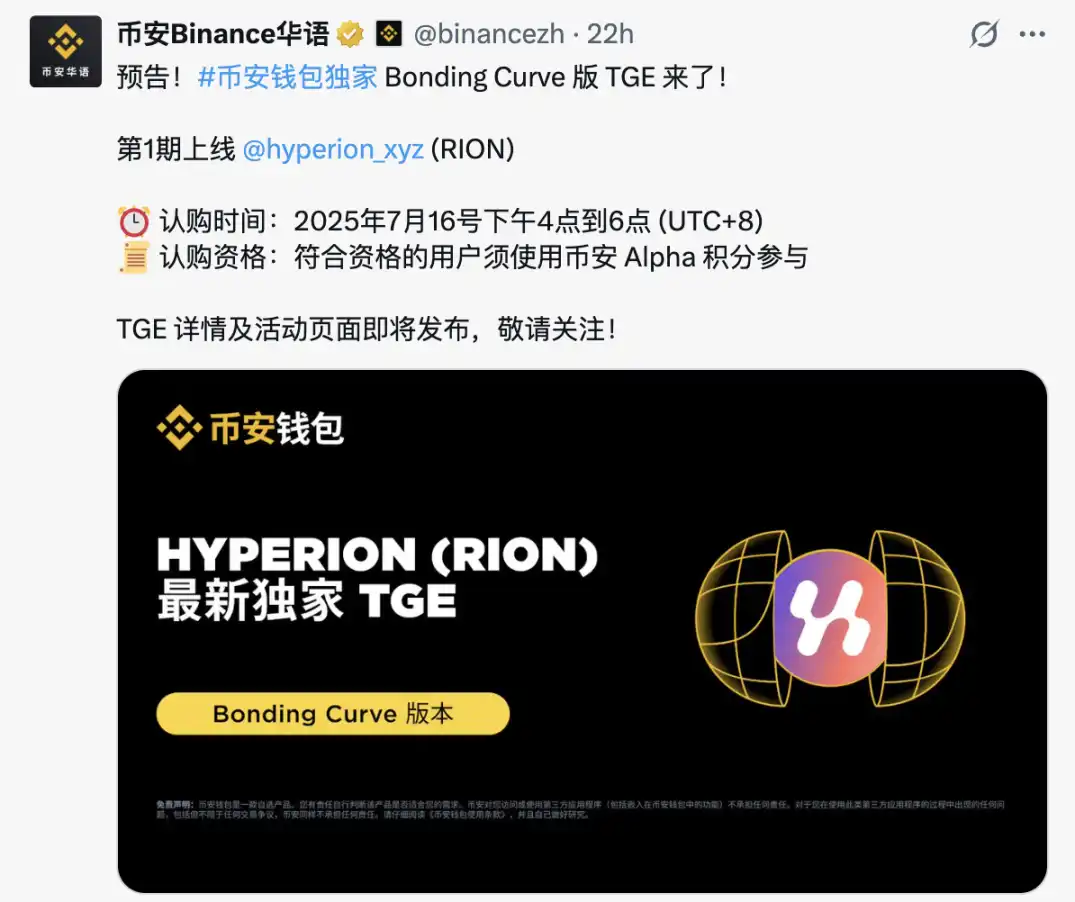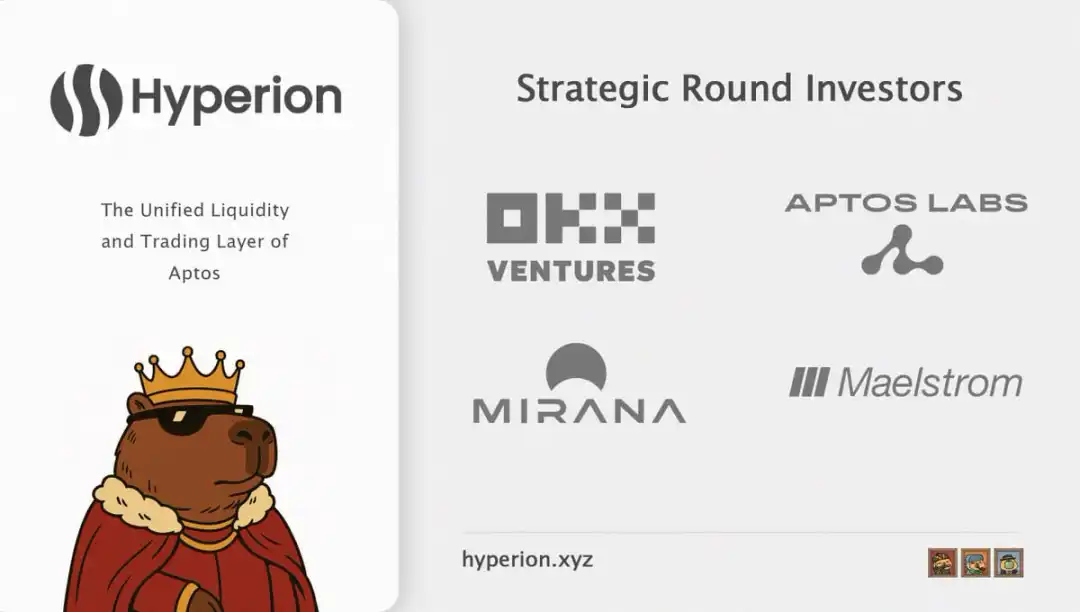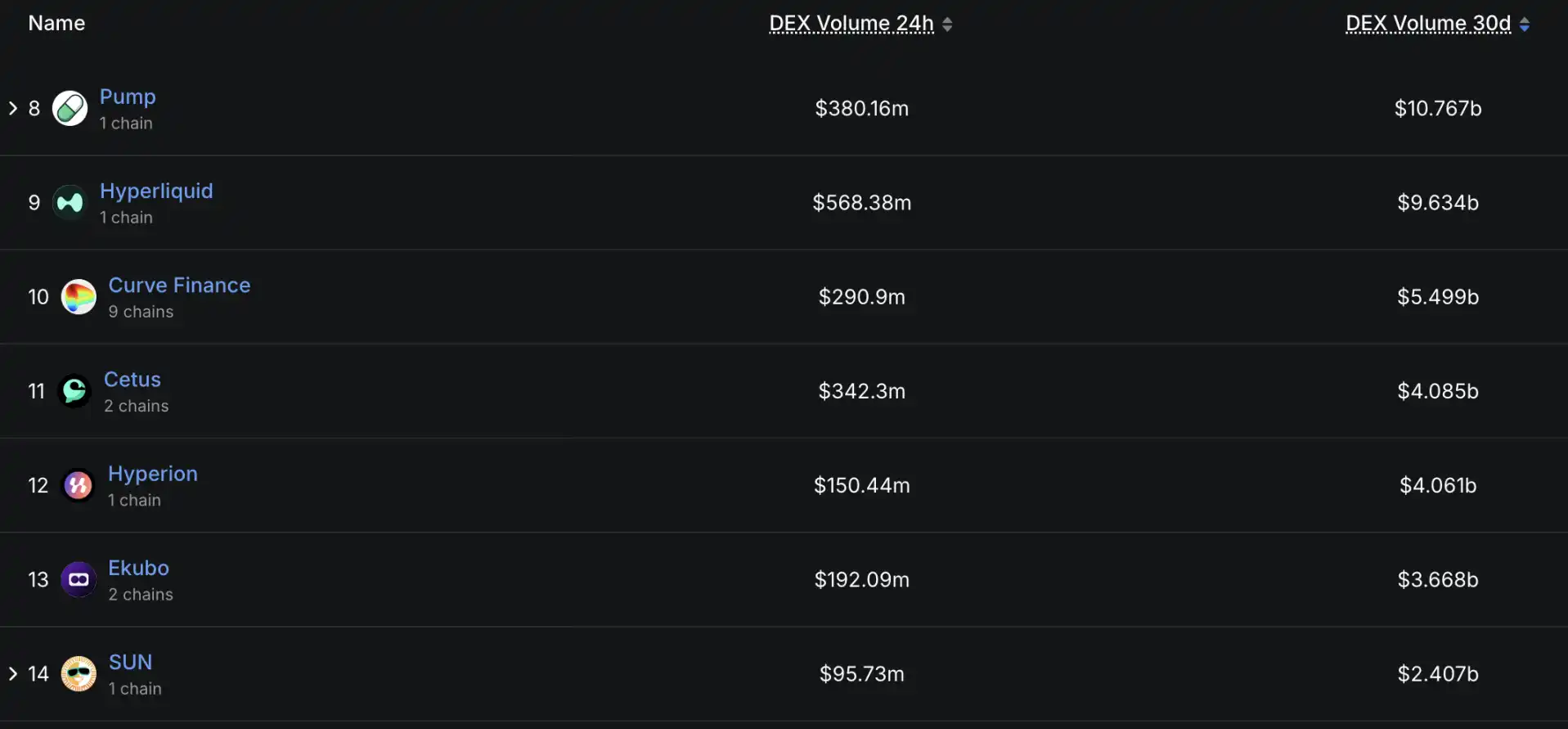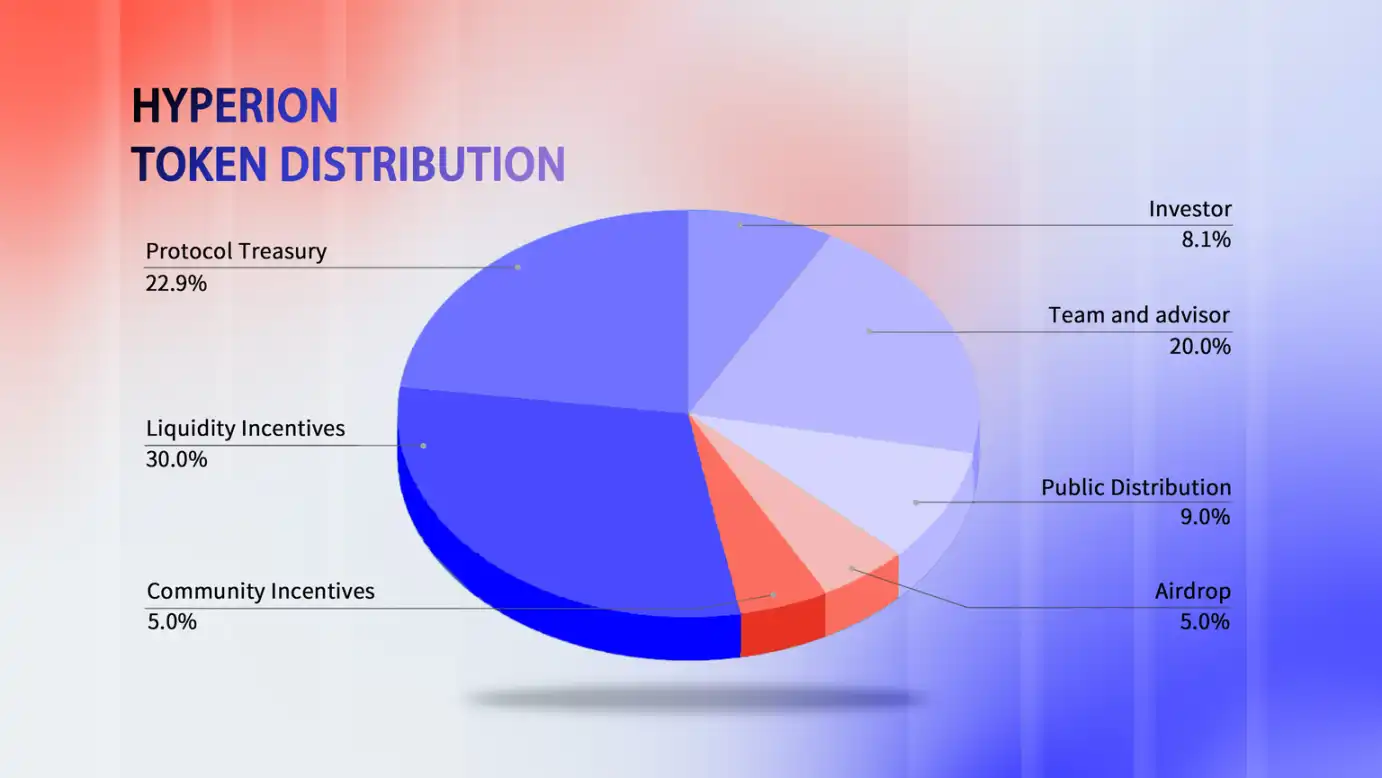Original Title: "Overview of Hyperion: What is the Background of Binance's New Play First Project?"
Original Author: Alex Liu, Foresight News
On July 16 at 16:00, the Binance wallet will host the first Bonding-Curve TGE, launching the native token RION of the Aptos ecosystem DEX project Hyperion. This event requires eligible users to participate in the subscription using Binance Alpha points, providing dynamic pricing and liquidity for RION through the "Bonding-Curve" algorithm.

Taking this opportunity, we will comprehensively review Hyperion's project positioning, technical features, financing history, data metrics, token economics, airdrop plan, and also introduce other popular projects in the Aptos ecosystem and overall activity levels.
Protocol Features: Hybrid Order Book + AMM + Aggregation
Hyperion is a hybrid decentralized exchange (DEX) natively deployed on the Aptos chain, integrating both order book matching and advanced automated market-making mechanisms. The core design is based on a concentrated liquidity model (similar to Uniswap V3), allowing liquidity providers to allocate funds within specified price ranges, enhancing capital efficiency.
Hyperion also features a Directional Liquidity Market Maker (DLMM) mechanism, which achieves zero slippage trading for highly volatile assets by dynamically adjusting the fund distribution within the x+y=k curve. This allows Hyperion to efficiently serve stablecoin pairs while also catering to the trading needs of long-tail assets, making it the first DEX on Aptos to meet this scenario.
In June 2025, Hyperion launched an aggregation routing feature, shifting its positioning from a single DEX to a full-chain liquidity hub. This feature intelligently splits trading paths, aggregating liquidity from all DEXs on Aptos to provide users with the best prices and lowest slippage.

According to Hyperion's official documentation, its "fully on-chain hybrid order book - AMM DEX" natively utilizes the Aptos parallel execution engine, catering to the needs of both professional traders and retail investors. Additionally, Hyperion is developing a limit order feature and has a yield vault, Drips incentives, forming a complete trading infrastructure layer.
Financing Situation: Entry of Institutions like OKX and Maelstrom
Hyperion quickly gained support from multiple institutions shortly after its inception. In April of this year, Hyperion completed a round of strategic financing led by OKX Ventures, with Aptos Labs (supporting team of Aptos founders) participating. Subsequent capital involvement included Maelstrom (the family office of BitMEX founder Arthur Hayes), Mirana Ventures, among others, but specific amounts have not been disclosed.

Project Data: High Trading Volume and Active Users
In just a few months, Hyperion has rapidly become the liquidity center of the Aptos ecosystem. Hyperion is currently the largest trading protocol on Aptos, with a cumulative on-chain transaction volume exceeding $6.5 billion. As of July, Hyperion's TVL (Total Value Locked) surpassed $130 million. The average daily trading volume fluctuates between $125 million and $150 million, reaching as high as $174 million in early July.
According to DefiLlama data, Hyperion's total trading volume over the past 30 days exceeded $4 billion, ranking 12th among all DEXs.

It has also launched many user incentive activities in collaboration with mainstream wallets and platforms. For example, the USDC DeFi event in partnership with OKX Wallet, trading mining and airdrop activities in collaboration with Bitget Wallet and Gate Wallet, have attracted users and liquidity to the protocol.
Hyperion introduced the Drips points system, allowing traders, LPs, and community contributors to accumulate points through on-chain interactions, which are linked to airdrops and governance. These initiatives have collectively promoted user growth: as of now, nearly 940,000 participants have engaged in on-chain interactions with Hyperion.
Token Economics: Dual Token Model and Distribution
Hyperion adopts a dual-token model: a tradable native token RION (total supply of 100 million) and a governance token xRION generated through staking. RION is the functional token of the Hyperion platform, used for paying fees, settling transactions, and distributing rewards. xRION is a non-transferable governance certificate, allowing users to lock RION (for a maximum of 52 weeks) in exchange for xRION, which is used for platform governance and new project launch pool allocations. The weight of xRION is designed to linearly decrease over time, encouraging long-term holding and continuous participation.
Hyperion has announced its genesis airdrop arrangement: 5% of RION is allocated to reward early participants in the protocol. Of this, 3% will be released at the time of token generation, and the remaining 2% will be unlocked linearly one month after the TGE. The uses of RION also include platform operations, ecosystem development rewards, etc. (the official documentation states that RION will be distributed based on actual on-chain activity, and inactive users will not receive additional tokens). When RION is issued through the Bonding Curve mechanism of the Binance wallet, its price will be determined by supply and demand, and after the event ends, it will become a regular trading asset.

Airdrop Details and Participation Method
Hyperion has set up community incentives and an airdrop mechanism to attract users. As mentioned earlier, its genesis airdrop covers traders, liquidity providers, and community contributors of the protocol, accounting for 5% of RION. The key to qualifying for the airdrop is participation in the Hyperion ecosystem: users can earn Drips points by trading, providing liquidity, or completing community tasks. Points are directly linked to subsequent token airdrops and governance weight, and can be used to redeem future airdrop rewards or gain Launchpad whitelist eligibility.
The Hyperion airdrop includes a lucky draw for addresses that received the Aptos airdrop in 2022, with about 800 addresses randomly selected to qualify for claiming RION.
Participate in Binance Wallet's Bonding Curve TGE
This RION TGE is exclusively issued by Binance Wallet's Bonding-Curve TGE, marking the first such event for Binance Alpha. The subscription time is set for July 16, 2025, from 16:00 to 18:00, and participation requires Binance Alpha points.
The rules of the event are: each user can invest a maximum of 3 BNB to participate in the subscription, and the smart contract will dynamically calculate the current price based on the total amount of RION sold. Once users confirm their investment, BNB is locked, and an equivalent amount of RION is allocated to their Alpha account; during this phase, RION cannot be withdrawn off-chain and can only be traded with other users on the event page. Once an order is submitted, it cannot be revoked, and it will be executed as long as there are matching orders from other users. After the event ends, all unexecuted BNB will be automatically returned to the wallet, while the RION held by users will be unlocked and become freely tradable assets.
In simple terms, it is "buy early for cheap, buy late for expensive," and trading can only be done "internally" before the event ends, after which it can be freely traded.
免责声明:本文章仅代表作者个人观点,不代表本平台的立场和观点。本文章仅供信息分享,不构成对任何人的任何投资建议。用户与作者之间的任何争议,与本平台无关。如网页中刊载的文章或图片涉及侵权,请提供相关的权利证明和身份证明发送邮件到support@aicoin.com,本平台相关工作人员将会进行核查。




